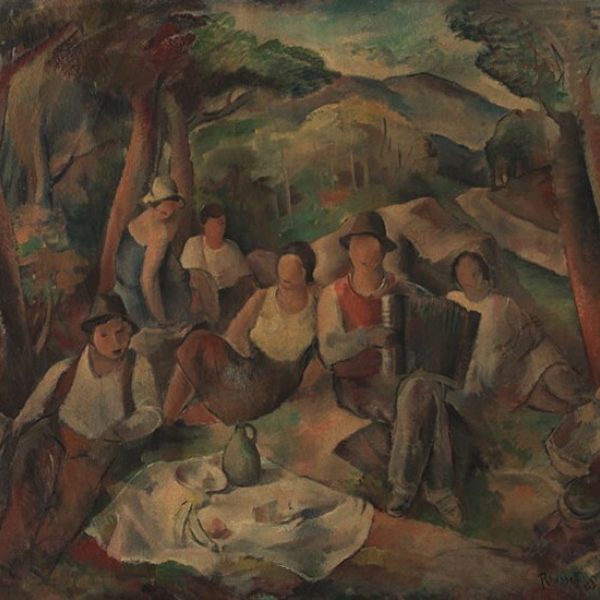Walter Rousseff
b. 1905, Sillistria, Bulgaria - d. 1979, Boston, MA
Vladimir Walter Rousseff was born in Bulgaria in 1890 and spent his childhood making art and excelling in geography and history. He roamed the country, fished, read poetry, and later described his parents’ disappointment “for they expected mathematics, bookkeeping, commercial transactions, etc.; instead they got Greek ornaments, water lilies, ocean steamers, childish poetry and ‘notre pere’ [rudimentary French].” He described himself as an “obstreperous” child, who once tried to use oil paints stolen from his uncle.
His father gave him 1,000 francs at age 15 to come to America, where he struggled as a “dishwasher, waiter, carpenter, store clerk, lawyer’s investigator, restaurant manager, peddler, factory hand, cigar store clerk, soda fountain clerk, guard and what not. Such were the steps by which I climbed to the Art Institute Chicago.” He saved $60 to enroll at the School of the Art Institute of Chicago (SAIC) some time after 1916, and was happy at school, walking home every evening “to save carfare for charcoal.” He studied with Albert H. Krehbiel and Randall Davey, and recalled how, “There I found things which we did not have in our native land, at least I did not see them there. The attraction was stronger than magnet and I climbed, slowly, patiently, carefully.” He met Minnie Hansen at SAIC, they married in 1922. He also attended the Art Students League in 1919 or 1920.
Rousseff painted murals for the Works Progress Administration in post offices in Kaukauna, Wisconsin (A. Grignon Trading with the Indians, 1938), Edgerton, Wisconsin (Tobacco Harvest, 1941), and in Michigan. While he lived in Chicago, he also maintained a studio in Iron Mountain, in Michigan’s Upper Peninsula. He completed five western-themed murals for the Iron Mountain post office, 1935–36. His oil painting, Fish Camp, fits well within this western territory subject, but presents the campers—both men and women—as if they were bathers in a Cézanne painting, with faceted shapes of the landscape, angular composition, and muted earth tones. The bucolic Wisconsin scene of casual social interaction and leisure in an outdoor setting is also reminiscent of the French Impressionist tradition and Manet’s Déjeuner sur l’herbe (1862-63; Musée d’Orsay, Paris), in particular. Rousseff also included an accordion player, referencing, perhaps, the enjoyment of music outdoors that dates also to Giorgione and the Italian Renaissance.
Lisa Meyerowitz
Reference
Rousseff, Walter. Pamphlet file, P-19263. Ryerson Library. Art Institute of Chicago.
